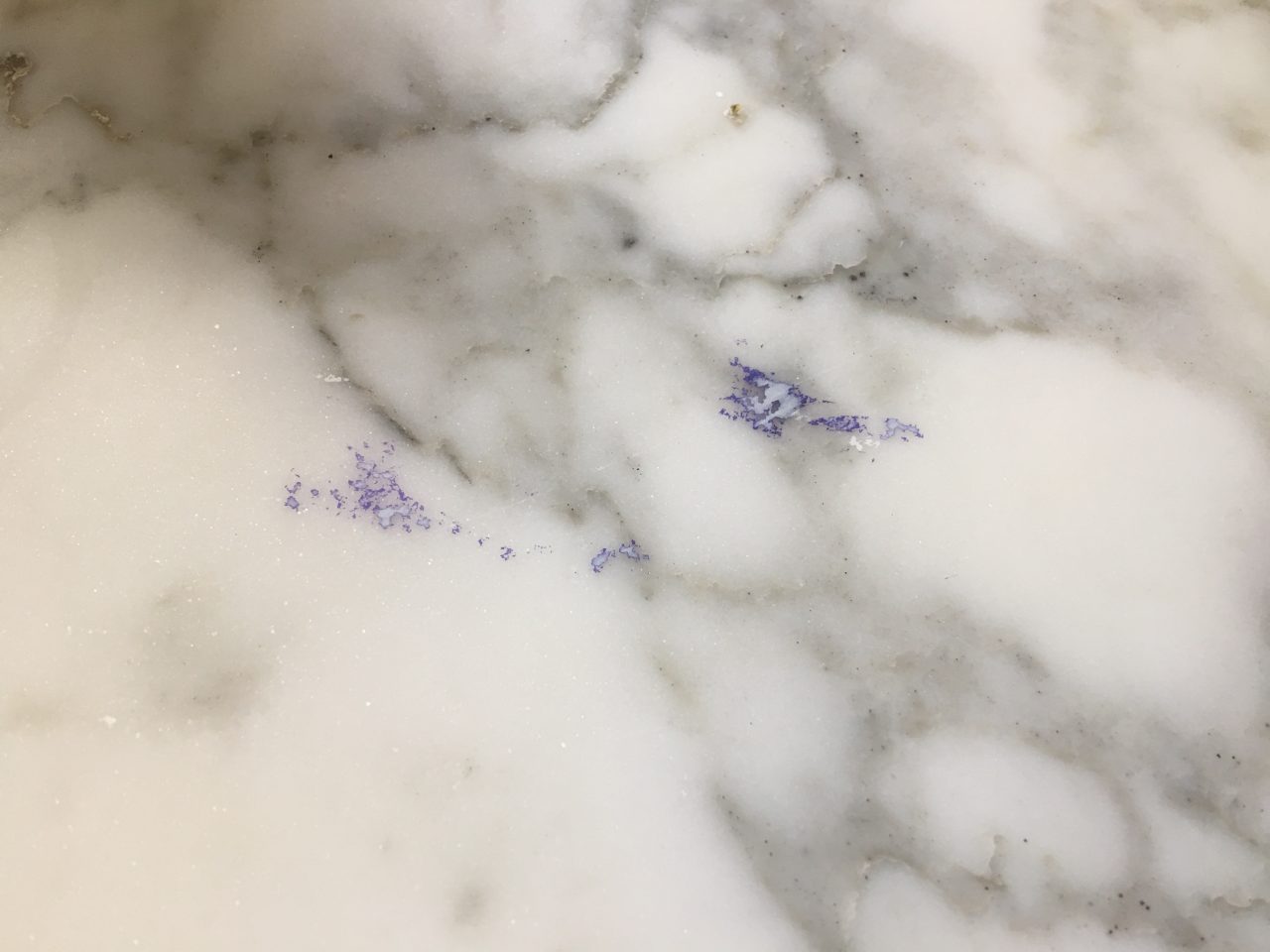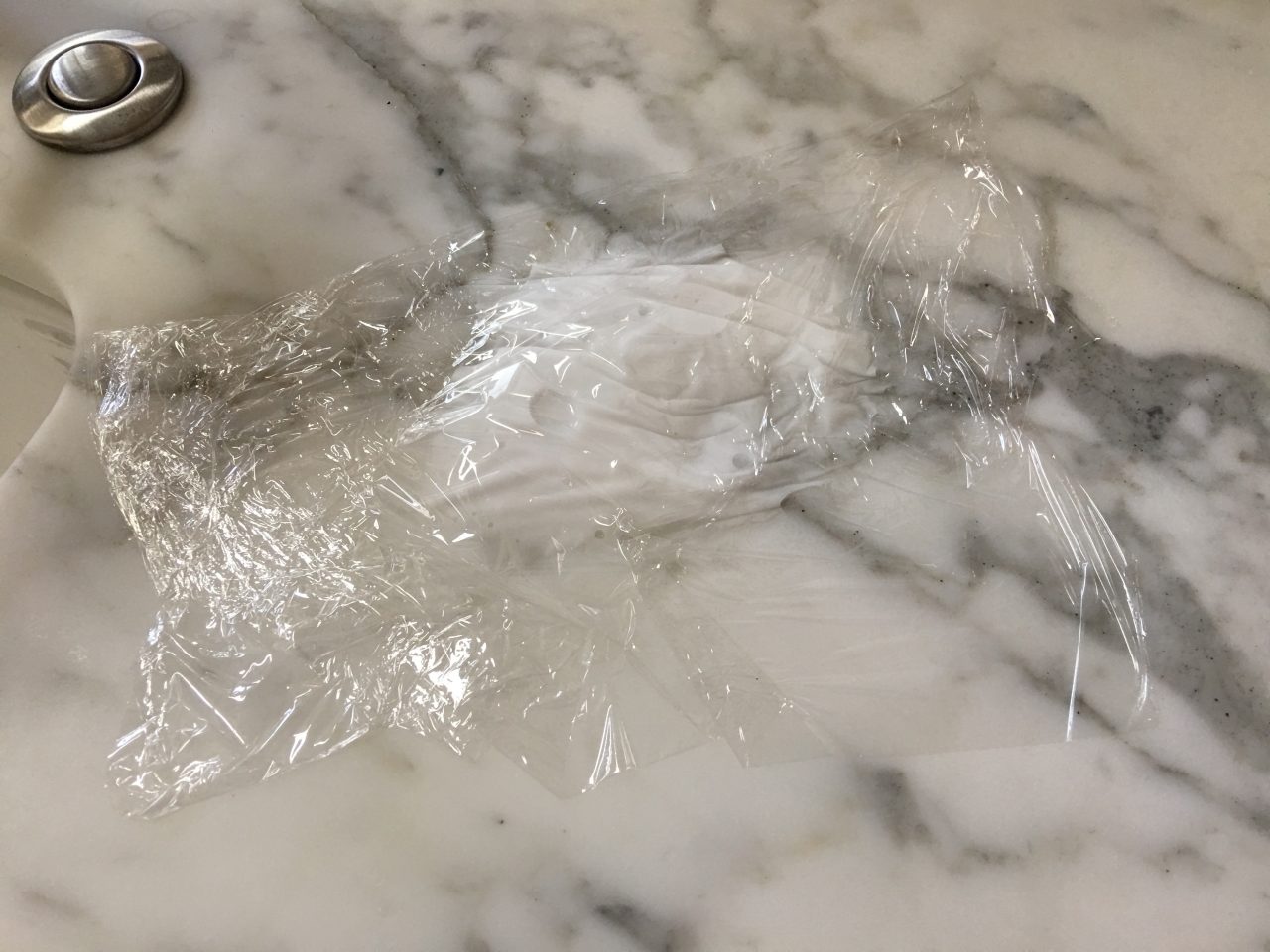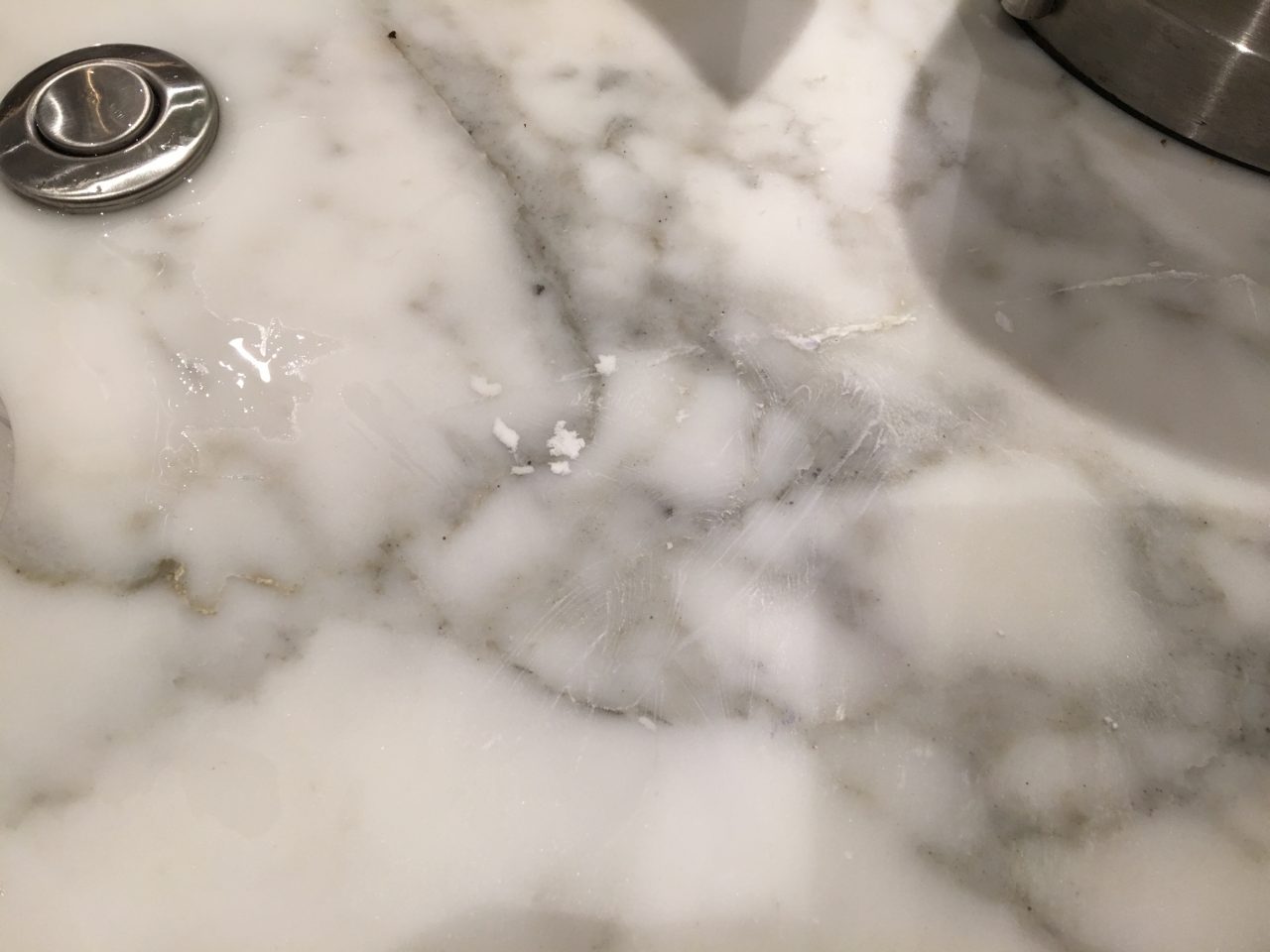From the start, I was dead set on using engineered stone for our counter tops. While not a pretty as natural stone, it is about as bullet proof a material as you can get.
But, slowly but surely, our designer talked me out of engineered stone in favor of natural stone. It’s true, it does look nicer, and provides quite a pop when you look at a room with natural stone in it.
But it does come with a down side. Natural stone comes with varying degrees of porousness. Some materials are very dense, or come in a color that doesn’t readily show stains. Other materials, like our marble island top, are porous and pretty easily stain.
We’ve had our island sealed twice, but it still seems to pick up loose color from items place upon it, when water is introduced, easily. Here is a stain from the color that bled from the bottom of a tissue box.

To pull stains out of a porous surface, you use a poultice. A poultice is a soft moist mass of some material you place over a stain, and it pulls the stain out. Here is the stain with a baking soda poultice on it.

To make this poultice, you simply add water to baking soda until it has the consistency of sour cream, spread it over the stain, cover it with saran wrap, let it dry, and scrape it off.
This stain required only one application.

As you can see, it is all gone.
As best I can figure, the way a poultice works is that it provides two things, a medium in which the color can travel (water) and a material that has a higher affinity for the dye than the stone (baking soda). So the water soaks in to the stone, and the water moves back and forth in and out of the stone simply through natural convection. When the water comes out of the stone and into the baking soda, the dye sticks to the baking soda and doesn’t go back into the stone. You do this long enough, and all the dye will come out of the stone.